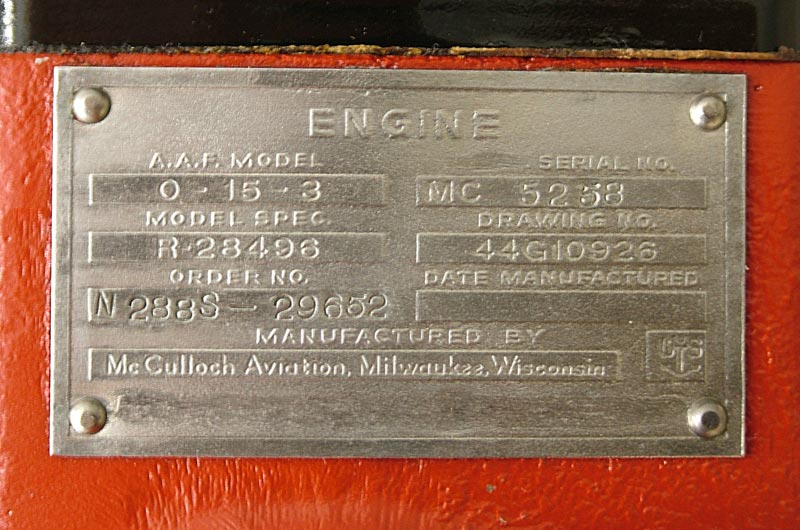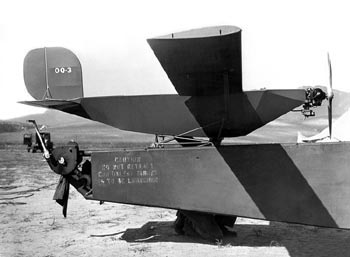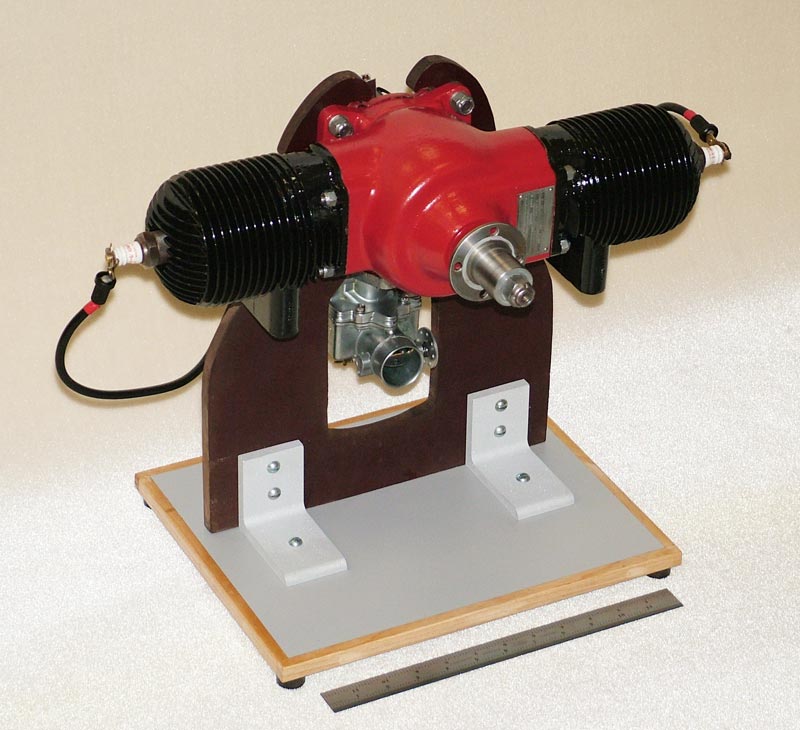McCulloch Motors Corporation of Los Angeles, California has built a wide variety of gasoline-engine powered products, including chainsaws, helicopters, gyroplanes and engines for radio-controlled target drones. Their first aircraft product apparently was the production from 1943, under US Government contracts, of Righter-designed two-stroke cycle engines for WWII target drones. Later, McCulloch built many two-stroke engines of their own design for various manned and unmanned aircraft applications. This engine has been expertly restored to original specifications.
In response to the U.S. Army Air Forces’ requirement for fast aerial targets with which to train anti-aircraft gunners, Radioplane (a division of Northrop Aircraft Co.) developed a 200 mph class airplane in 1945. It was first flight tested in 1946 and was capable of catapult launches, rotary launches from a circular runway, and air launches from a B-26C. When hit or out of fuel, the target was recovered under a 32-foot diameter parachute. The OQ-3 drone was built in several variants using this two-cylinder engine. Four-cylinder versions came later which provided speeds over 300 mph.
We call this the “Marilyn Monroe Engine,” because along with the engine we received a photo of a young Marilyn Monroe (then named Norma Jean Dougherty) in the McCulloch factory posing with the same engine on the production line. One of the first jobs she got when she moved to California to seek fame and fortune was working at McCulloch. It is said that these publicity photos attracted attention in Hollywood and led to her introduction to motion picture fame. The photo is displayed with the engine.
The drone system was developed primarily by movie actor and inventor Reginald Denny (1891-1967), and Walter H. Righter (1905-1982). Four men were needed to launch this target, whether by catapult or by the rotary method. A fifth man flew the target from the ground or from another aircraft. At a range of 200 yards, the drone appeared to gunners like a single-engine fighter at 500 yards.




